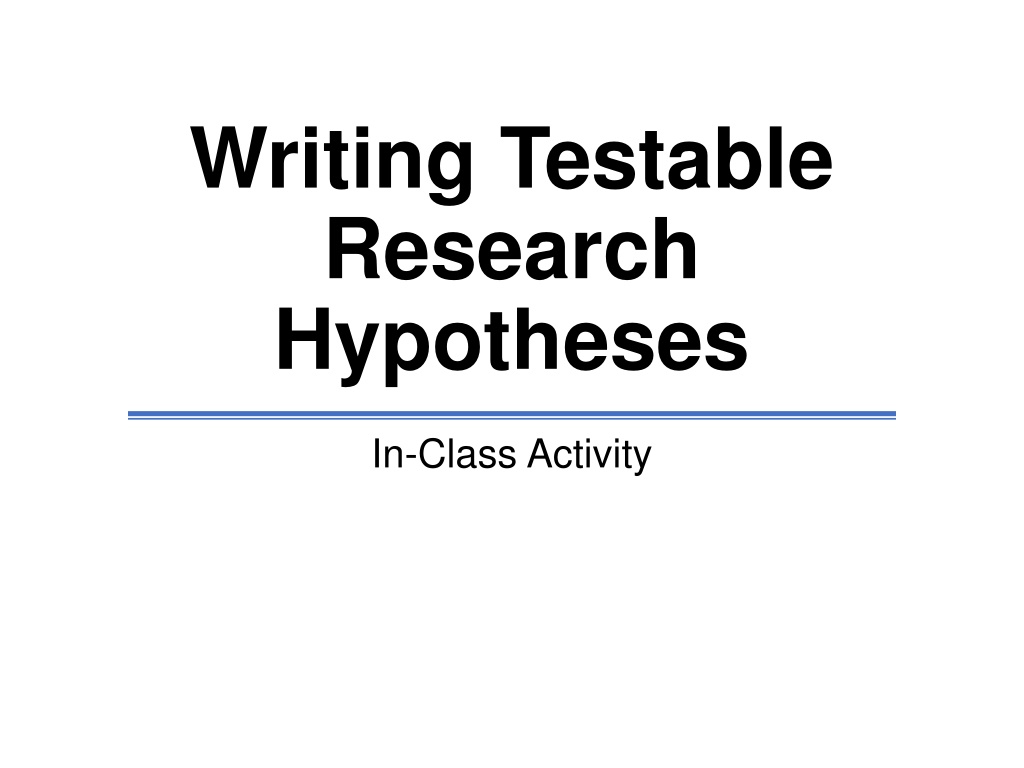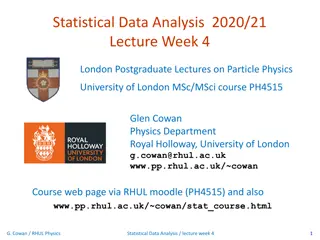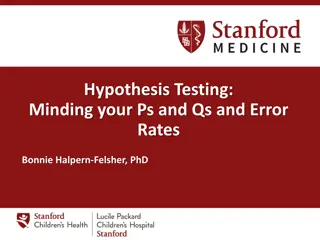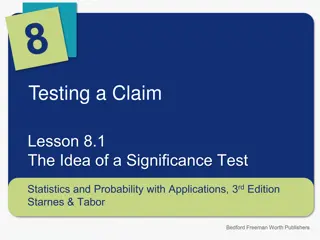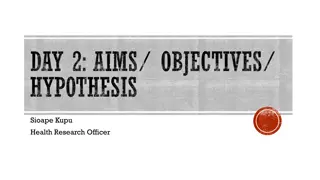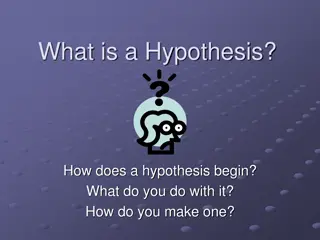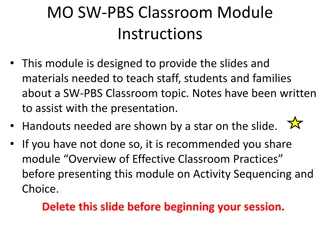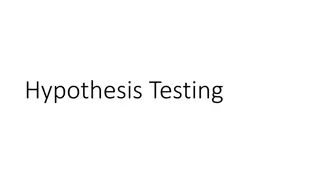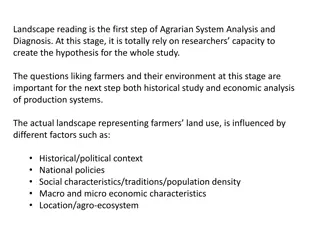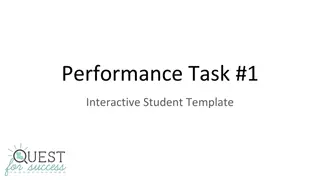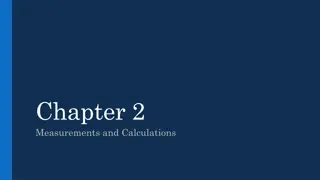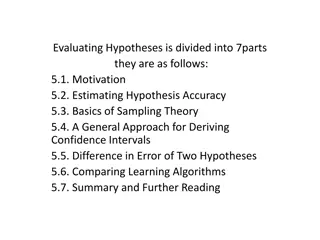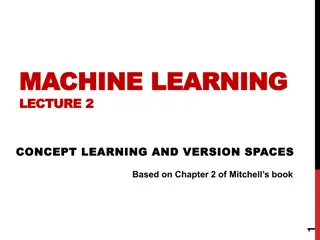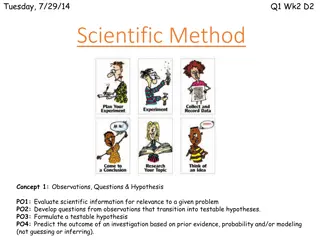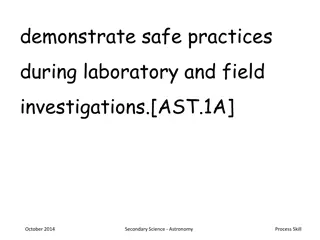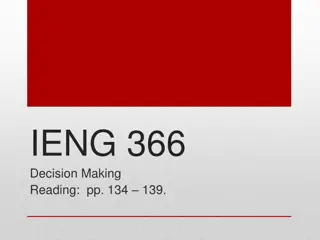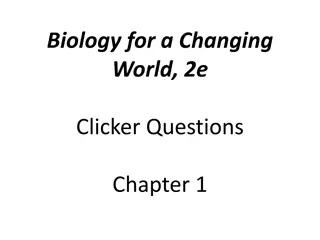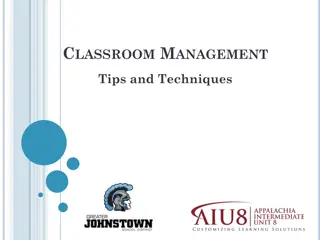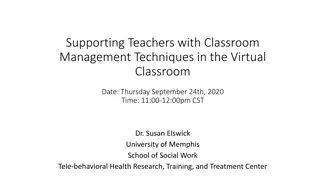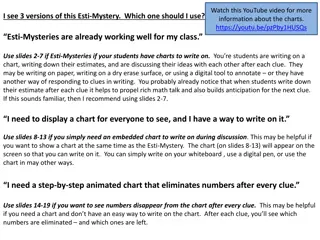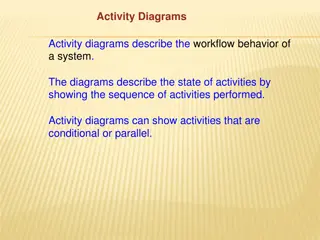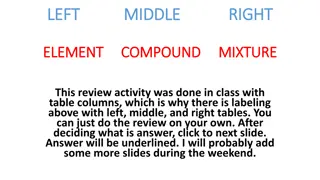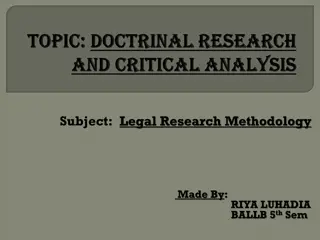Crafting Research Hypotheses in Classroom Activity
This in-class activity focuses on understanding the structure of writing testable research hypotheses for both experimental and correlational studies. It involves selecting variables, operational definitions, and applying them in an experimental approach while practicing directional and non-directional approaches.
- Research Hypotheses
- Experimental Studies
- Correlational Research
- Classroom Activity
- Testable Hypotheses
Uploaded on Sep 26, 2024 | 0 Views
Download Presentation

Please find below an Image/Link to download the presentation.
The content on the website is provided AS IS for your information and personal use only. It may not be sold, licensed, or shared on other websites without obtaining consent from the author. Download presentation by click this link. If you encounter any issues during the download, it is possible that the publisher has removed the file from their server.
E N D
Presentation Transcript
Writing Testable Research Hypotheses In-Class Activity
Goals of This Activity Understand the structure of writing a testable research hypothesis NOTE: This activity does not pertain to writing null and/or alternative hypotheses. Practice writing individual components of both experimental and correlational research hypotheses Operationally-defined variables Levels of independent variables (in experimental approaches) Apply both directional and non-directional approaches to writing testable hypotheses
Step 1: Pick Your Variables Pick one variable from the Variable #1 list on the left Pick one variable from the Variable #2 list on the right Does NOT have to be on the same line as your Variable #1 selection Note that the variables in this walk-through are not on your list Variable #1 Variable #2 Exercise Sleep Diet Social media usage Watching TV Studying behaviors Spending habits Texting habits Caffeine consumption Volunteering habits Traffic conditions Screen time Self-esteem Anxiety Happiness Academic performance Social media popularity Driving performance Reading comprehension Anger Memory performance Job satisfaction Physical strength Visual ability
Step 2: Write Your Variables in Appropriate Boxes Write the variables you selected from the two lists in the Variables Table In Box A, write your selection from the Variable #1 list In Box C, write your selection from the Variable #2 list screen time A. Choice from Variable #1 list (as written in list): B. Operationally-defined version of Variable #1 choice: visual ability C. Choice from Variable #2 (as written in list): D. Operationally-defined version of Variable #1 choice:
Step 3: Operationally Define Your Variables For each of the variables you selected, write an operational definition that could be used in a hypothetical study In Box B, write your operational definition of the Box A variable In Box D, write your operational definition of the Box C variable screen time A. Choice from Variable #1 list (as written in list): Operationally-defined version of Variable #1 choice: hours spent looking at digital screens B. visual ability C. Choice from Variable #2 (as written in list): Operationally-defined version of Variable #1 choice: score on an eye exam D.
Step 4: Apply Operational Definitions to Experimental Approach screen time A. Choice from Variable #1 list (as written in list): Operationally-defined version of Variable #1 choice: hours spent looking at digital screens B. Visual ability C. Choice from Variable #2 (as written in list): Operationally-defined version of Variable #1 choice: score on an eye exam D. Write the operational definitions from the Variables Table in the appropriate boxes of the Experimental Approach section of the of the Hypothesis Table Experimental Approach hours spent looking at digital screens Operationally-defined independent variable (box B): Levels of operationally- defined independent variable: score on an eye exam Operationally-defined dependent variable (box D): Do you wish to make a directional or non-directional prediction? (Circle one in the box at right.) Directional Non-directional Experimental Hypothesis:
Step 5: Define Levels for the Experimental Approach Write 2-3 levels of the independent variable that will be compared in your experimental hypothesis Should reflect operational definition of the independent variable Experimental Approach hours spent looking at digital screens Operationally-defined independent variable (box B): 0 hours, 2 hours, 4 hours Levels of operationally- defined independent variable: score on an eye exam Operationally-defined dependent variable (box D): Do you wish to make a directional or non-directional prediction? (Circle one in the box at right.) Directional Non-directional Experimental Hypothesis:
Step 6: Decide on Directionality for the Experimental Approach Indicate whether you wish to write a directional or non- directional hypothesis by circling the appropriate choice Experimental Approach hours spent looking at digital screens Operationally-defined independent variable (box B): 0 hours, 2 hours, 4 hours Levels of operationally- defined independent variable: score on an eye exam Operationally-defined dependent variable (box D): Do you wish to make a directional or non-directional prediction? (Circle one in the box at right.) Directional Non-directional Experimental Hypothesis:
Step 7: Write Your Experimental Hypothesis Using your operationally-defined dependent variable and levels of the independent variable, write a hypothesis that reflects the directional approach you selected Experimental Approach hours spent looking at digital screens Operationally-defined independent variable (box B): 0 hours, 2 hours, 4 hours Levels of operationally- defined independent variable: score on an eye exam Operationally-defined dependent variable (box D): Do you wish to make a directional or non-directional prediction? (Circle one in the box at right.) Directional Non-directional There will be a significant difference in participants eye exam scores based on whether they experienced 0, 2, or 4 hours of time looking at digital screens. Experimental Hypothesis:
Step 8: Apply Operational Definitions to Correlational Approach screen time A. Choice from Variable #1 list (as written in list): Operationally-defined version of Variable #1 choice: hours spent looking at digital screens B. Visual ability C. Choice from Variable #2 (as written in list): Operationally-defined version of Variable #1 choice: score on an eye exam D. Write the operational definitions from the Variables Table in the appropriate boxes of the Correlational Approach section of the Hypothesis Table Correlational Approach hours spent looking at digital screens First operationally-defined variable in correlation (box B): Second operationally-defined dependent variable in correlation (box D): score on an eye exam Do you wish to make a directional or non-directional prediction? (Circle one in the box at right.) Directional Non-directional Correlational Hypothesis:
Step 9: Decide on Directionality for Correlational Approach Indicate whether you wish to write a directional or non-directional hypothesis by circling the appropriate choice Correlational Approach hours spent looking at digital screens First operationally-defined variable in correlation (box B): Second operationally-defined dependent variable in correlation (box D): score on an eye exam Do you wish to make a directional or non-directional prediction? (Circle one in the box at right.) Directional Non-directional Correlational Hypothesis:
Step 10: Write Your Correlational Hypothesis Using the operational definitions of your two variables, write a hypothesis that reflects the directional approach you selected Correlational Approach hours spent looking at digital screens First operationally-defined variable in correlation (box B): Second operationally-defined dependent variable in correlation (box D): score on an eye exam Do you wish to make a directional or non-directional prediction? (Circle one in the box at right.) Directional Non-directional The number of hours spent looking at digital screens will be negatively correlated with eye exam scores. Correlational Hypothesis:
Repeat All Steps for Variable Pairs 2-4 A few tips and reminders Do not use any variable twice! Your remaining 3 pairs should use 6 unique variable choices (in total). Make sure you are writing hypotheses using the operational definitions you came up with rather than the conceptual definitions from the list. Try to get practice with both directional and non-directional hypotheses for both experimental and correlational approaches. Your wording needs to be definitive so that it can be refutable (i.e., use will be instead of phrases like may be or could be ).
Tips for Experimental Hypotheses Your hypothesis should make a prediction about the nature of differences between at least 2 levels of your independent variables. Non-directional example: [The operationally-defined dependent variable] will differ based on whether participants experienced [Level 1] or [Level 2] . Directional example: The [Level 1] group will yield higher [operationally- defined dependent variable measures] than the [Level 2] group.
Tips for Correlational Hypotheses Your hypothesis should be written about holistic variables (i.e., eye exam scores) rather than ranges of those variables (i.e., high eye exam scores). Non-directional example: [Operationally-defined variable #1] will be significantly correlated with [operationally-defined variable #2] . Directional example: [Operationally-defined variable #1] will be negatively correlated with [operationally-defined variable #2] .
